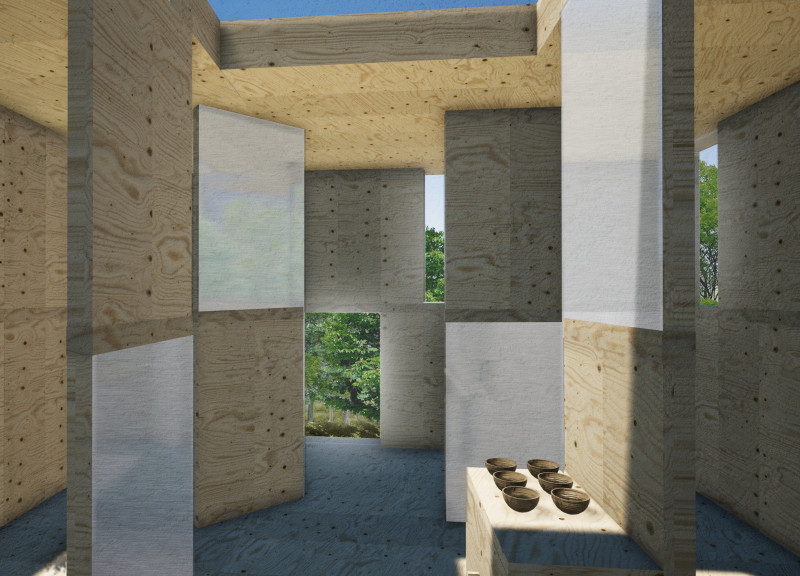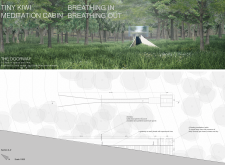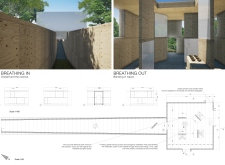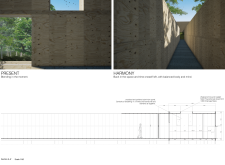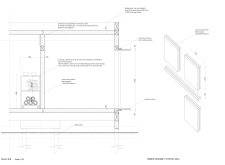5 key facts about this project
The design prioritizes functionality and adaptability, accommodating a range of activities from solitary meditation to group gatherings. The layout is characterized by a series of defined spaces that guide users through different areas of contemplation, reinforcing the journey inward while maintaining an overarching dialogue with the natural surroundings.
Unique Aspects of the Design Approach
One notable feature of the "Tiny Kiwi Meditation Cabin" is its extensive use of sustainable materials, which contributes to both ecological responsibility and aesthetic appeal. The primary materials include solid wood planks made from Macrocapa, which offer warmth and durability, while anodized aluminum panels provide structural strength and allow for generous window openings that maximize natural light. Solid polycarbonate sheets are utilized in the roofing, creating a diffused light effect that enhances the overall atmosphere within the cabin.
In addition, the design incorporates versatile structural elements, such as a rolling cabinet that serves dual purposes, acting as both a storage space and an altar for meditation supplies. This level of adaptability is essential to the project, allowing users to personalize their experience according to various needs and preferences.
A comprehensive understanding of the spatial distribution reveals a thoughtfully organized flow that promotes engagement with the natural environment. The cabin's layout includes narrow corridors and private alcoves, providing users with intimate spaces for reflection amid expansive views of the surrounding forest.
Focus on Spatial and Material Integration
The "Tiny Kiwi Meditation Cabin" emphasizes biophilic design principles, ensuring that every element reflects a strong connection to the environment. The large openings and strategic placement of windows serve not only to illuminate the interior spaces but also to draw the eye toward the lush forest outside. This relationship helps dissolve the boundaries between indoor and outdoor experiences, underscoring the core intent of the project.
The careful selection of materials contributes significantly to the cabin's ecological footprint while enhancing the sensory experience of users. The use of local materials, combined with sustainable building practices, demonstrates a commitment to ecological integrity. Each material is chosen not only for its performance but also for its ability to resonate with the environment, creating a space that feels organic and cohesive.
Explore the architectural plans, sections, and designs of the Tiny Kiwi Meditation Cabin for further insights into its construction and spatial strategies. Engage with the architecture of this project to understand better the innovative ideas that inform its unique approach to meditation and connection with nature.


